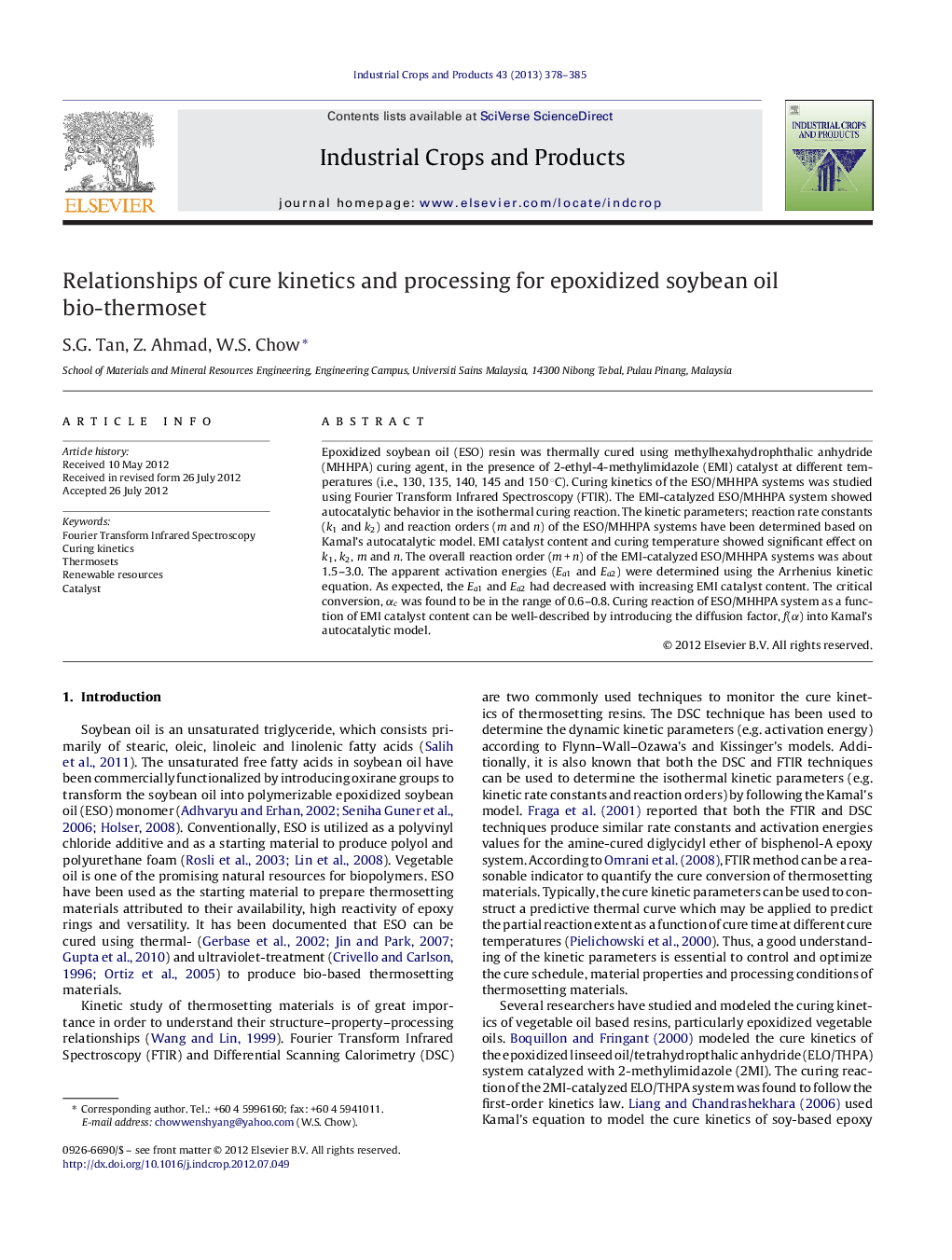| Article ID | Journal | Published Year | Pages | File Type |
|---|---|---|---|---|
| 4514144 | Industrial Crops and Products | 2013 | 8 Pages |
Epoxidized soybean oil (ESO) resin was thermally cured using methylhexahydrophthalic anhydride (MHHPA) curing agent, in the presence of 2-ethyl-4-methylimidazole (EMI) catalyst at different temperatures (i.e., 130, 135, 140, 145 and 150 °C). Curing kinetics of the ESO/MHHPA systems was studied using Fourier Transform Infrared Spectroscopy (FTIR). The EMI-catalyzed ESO/MHHPA system showed autocatalytic behavior in the isothermal curing reaction. The kinetic parameters; reaction rate constants (k1 and k2) and reaction orders (m and n) of the ESO/MHHPA systems have been determined based on Kamal's autocatalytic model. EMI catalyst content and curing temperature showed significant effect on k1, k2, m and n. The overall reaction order (m + n) of the EMI-catalyzed ESO/MHHPA systems was about 1.5–3.0. The apparent activation energies (Ea1 and Ea2) were determined using the Arrhenius kinetic equation. As expected, the Ea1 and Ea2 had decreased with increasing EMI catalyst content. The critical conversion, αc was found to be in the range of 0.6–0.8. Curing reaction of ESO/MHHPA system as a function of EMI catalyst content can be well-described by introducing the diffusion factor, f(α) into Kamal's autocatalytic model.
Graphical abstractFigure optionsDownload full-size imageDownload as PowerPoint slideHighlights► The study focused on the cure kinetics of “green” epoxidized soybean oil thermoset. ► Curing kinetics of epoxidized soybean oil can be characterized by means of FTIR. ► A kinetic model on the isothermal curing of epoxidized soybean oil was developed. ► Curing temperature and EMI content had large effects on the cure kinetic parameters. ► Optimum processing conditions could be predicted based on the cure kinetic data
